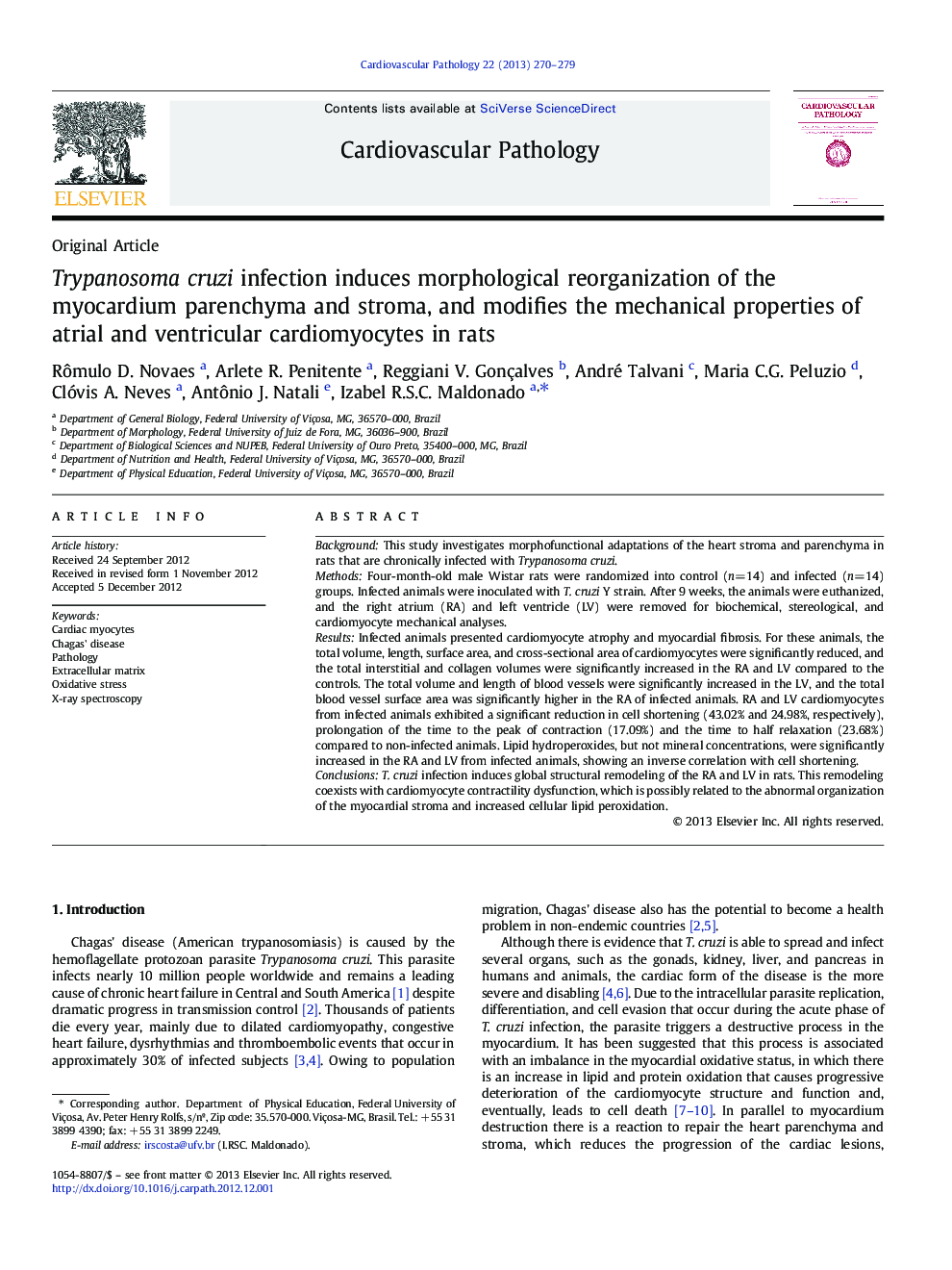| Article ID | Journal | Published Year | Pages | File Type |
|---|---|---|---|---|
| 2899086 | Cardiovascular Pathology | 2013 | 10 Pages |
BackgroundThis study investigates morphofunctional adaptations of the heart stroma and parenchyma in rats that are chronically infected with Trypanosoma cruzi.MethodsFour-month-old male Wistar rats were randomized into control (n=14) and infected (n=14) groups. Infected animals were inoculated with T. cruzi Y strain. After 9 weeks, the animals were euthanized, and the right atrium (RA) and left ventricle (LV) were removed for biochemical, stereological, and cardiomyocyte mechanical analyses.ResultsInfected animals presented cardiomyocyte atrophy and myocardial fibrosis. For these animals, the total volume, length, surface area, and cross-sectional area of cardiomyocytes were significantly reduced, and the total interstitial and collagen volumes were significantly increased in the RA and LV compared to the controls. The total volume and length of blood vessels were significantly increased in the LV, and the total blood vessel surface area was significantly higher in the RA of infected animals. RA and LV cardiomyocytes from infected animals exhibited a significant reduction in cell shortening (43.02% and 24.98%, respectively), prolongation of the time to the peak of contraction (17.09%) and the time to half relaxation (23.68%) compared to non-infected animals. Lipid hydroperoxides, but not mineral concentrations, were significantly increased in the RA and LV from infected animals, showing an inverse correlation with cell shortening.ConclusionsT. cruzi infection induces global structural remodeling of the RA and LV in rats. This remodeling coexists with cardiomyocyte contractility dysfunction, which is possibly related to the abnormal organization of the myocardial stroma and increased cellular lipid peroxidation.
